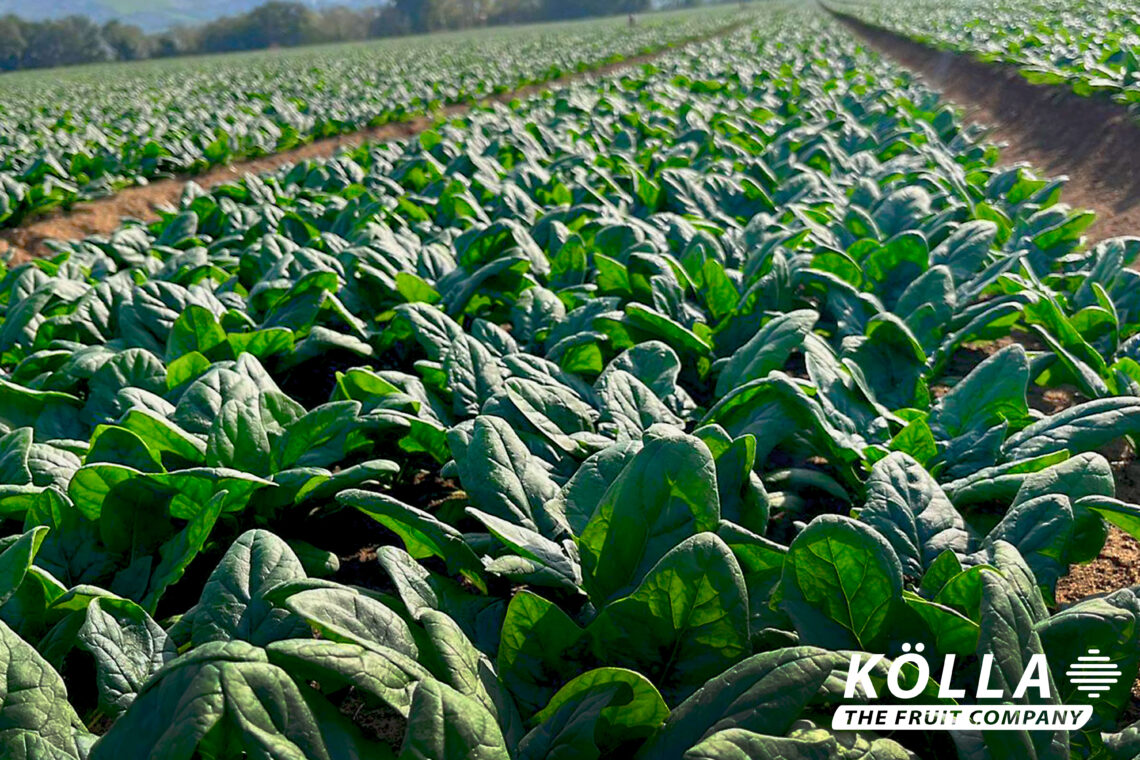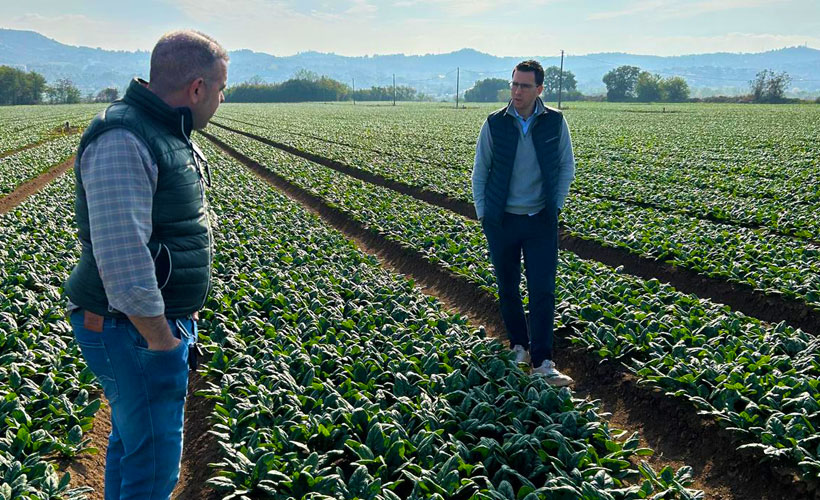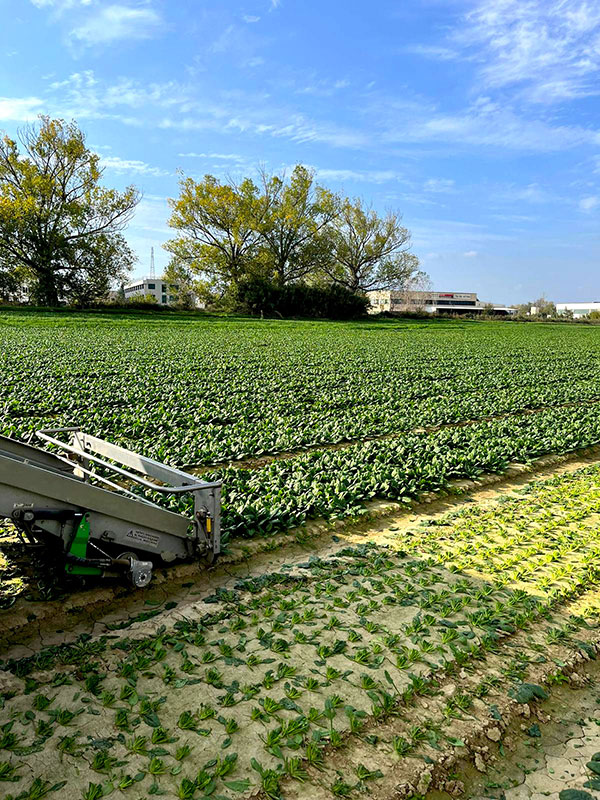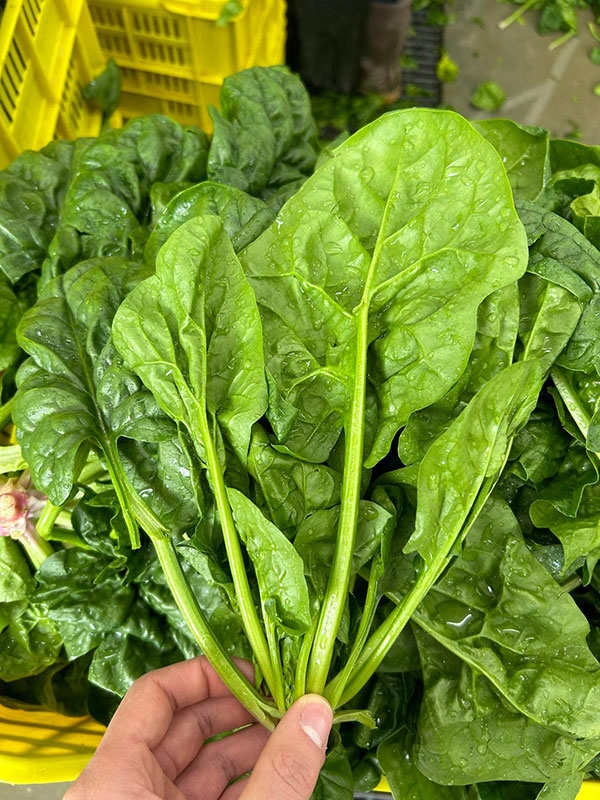Vegetable cultivation in Italy showcases remarkable diversity: In the Abruzzo region, a spinach producer cultivates over 500 hectares dedicated exclusively to this leafy green, while in other areas, smaller growers manage plots of just 50 hectares. “That’s a completely different scale,” explains Felix Negri, who has been part of KÖLLA’s Bolzano branch for seven years. The agricultural expert offers a behind-the-scenes look into the vegetable trade in Bella Italia.
The vegetable trade is certainly one thing: fast-paced. Each year, crops are replanted and cannot simply remain in the field longer or be stored for extended periods. To keep up with this tempo, a diverse strategy is essential. “For each product category, we work closely with one or two strategic partners. Together, we plan fields under contract farming, guarantee sales volumes, and meticulously discuss programs,” explains Negri.
These partners are spread across various regions in Italy, with many areas specializing in specific products. “Six regions are particularly significant for export,” Negri adds, diving into the details. In the east, Abruzzo stands out, where a long-term partner grows spinach. Further south in Apulia, near Foggia, Negri finds “the best broccoli” during winter, green asparagus in spring, as well as cauliflower.
Further along the coast, heading toward the heel of the boot, more delicate-leaf varieties thrive. In the Bari and Polignano areas — likely familiar to Italophile readers as popular seaside destinations — lettuces and herbs for the German market are cultivated. “Flat-leaf and curly parsley, dill, as well as colorful lettuces like Lollo Rosso and Biondo, oak leaf, and endives,” Negri lists. Swiss chard and celery are also part of Apulia’s offerings.
Specialized Cultivation
Further west, at the “arch” of the boot, lies Basilicata. “Here, we collaborate closely with two specialized growers: one has now almost entirely focused on kohlrabi production, achieving the highest standards,” Negri notes.
Sicily is the fourth region, primarily known for exporting tomatoes. Continuing to region five in our “imaginary vegetable tour,” we arrive in southwestern Campania. In Battipaglia, located south of Naples, baby leaf salads are grown on a large scale. “This includes baby spinach, arugula, baby leaf mixes, mesclun, and lamb’s lettuce, primarily cultivated in greenhouses. The region has fully specialized in this,” emphasizes Negri.
This category continues to grow, largely because it requires minimal manual labor — an increasingly critical factor for agriculture in Italy, as well as in other countries, he explains.
Not Always for Italian Tastes
A bit further north, just a few kilometers from Pompeii, lies the Striano location, which specializes in spring onions. Felix Negri then completes the overview with the sixth region from which KÖLLA sources vegetables: Lazio, with the Latina/Terracina areas, “which, for me, is almost the most interesting region,” historically known as the “Italian Palatinate.” A wide range of products is grown here: “Radishes, turnips, bunch carrots, daikon radish, kohlrabi, and now even pak choi.” What’s special about the vegetables grown in this area: They are 100% exported — “Few Italians eat these products,” Negri estimates. Currently available among these products: “Everything. There are just fluctuations — when it rains more or the sun doesn’t shine as much, weather-sensitive products like tomatoes, cauliflower, or broccoli react immediately. This affects availability and prices.”
Currently, there is already plenty of produce ready in Latina to be shipped to Germany, especially bunch carrots, radishes, and turnips. However, demand is still somewhat delayed because local production had a longer harvest season, making the sale of Italian produce a bit more challenging at the moment. The situation is quite different with salads: “The season ended earlier than usual in Germany, so we were quickly faced with high demand. The Italian production wasn’t prepared for this; planting was done as in previous years. As a result, availability is currently limited, and prices are rather high,” reports Negri. The availability of cauliflower is also still lower, but due to pressure from other producing countries, shipments are proceeding anyway, he explains pragmatically.
For planning, especially in the face of climate fluctuations.
“In general, we are observing the same issues in Italy as in other producing countries,” says the Bolzano-based expert when asked about current challenges in cultivation. “The situation is becoming increasingly difficult, so we are trying more and more to find vegetable varieties and regions that are more resilient to extreme weather events,” he reports. For some products, this works, but for others, cultivation is becoming more challenging—such as with spring onions, where Egypt is establishing itself as a new source country. The changing climate is leading to a rising risk for producers, who are now planning their fields more cautiously after continuously expanding their areas.
“We secure the fields with producers through careful contract planning before the season because, on the open market, you won’t find the quantities anymore,” he explains. This will become increasingly important for both producers and customers in the future: “Otherwise, you risk being left without products.” While the Emilia-Romagna region, known for fruit cultivation, reported flooding again this year, two other areas in southern Italy are facing severe drought: Sicily, which has been battling the now often dramatic water shortage for some time, and the Apulian region of Foggia.
“This year, it went so far that municipalities did not allow irrigation for annual crops,” reports Negri. As a result, for example, broccoli was planted much later, leading to a delayed start to the season. “We’ll see this more and more in the future,” he predicts.
Development in Vegetable Cultivation
Speaking of the future: What trends does he observe in vegetable cultivation? “We’re increasingly seeing hydroponic greenhouses in Germany, producing lettuce year-round,” which has an impact on production and quantities in Italy. The use of machinery in the aforementioned baby leaf salad cultivation in Battipaglia is also growing in importance, although sometimes more is produced than the market can absorb. Consumption trends towards healthy eating and Asian vegetables are also reflected in the fields, where pak choi and napa cabbage are gaining presence. And in his own work?
The challenges for vegetable cultivation in Italy are significant: climate change, rising production risks, and changing consumer trends require new approaches and closer collaboration between producers and buyers. As KÖLLA specialist Felix Negri emphasizes: “In the future, the open market will offer less and less product — planning and commitment will be crucial.”
Published in Fruchthandel | Week 47-48 | 2024 | Inga Detleffsen | Photos: KÖLLA
December 2024




